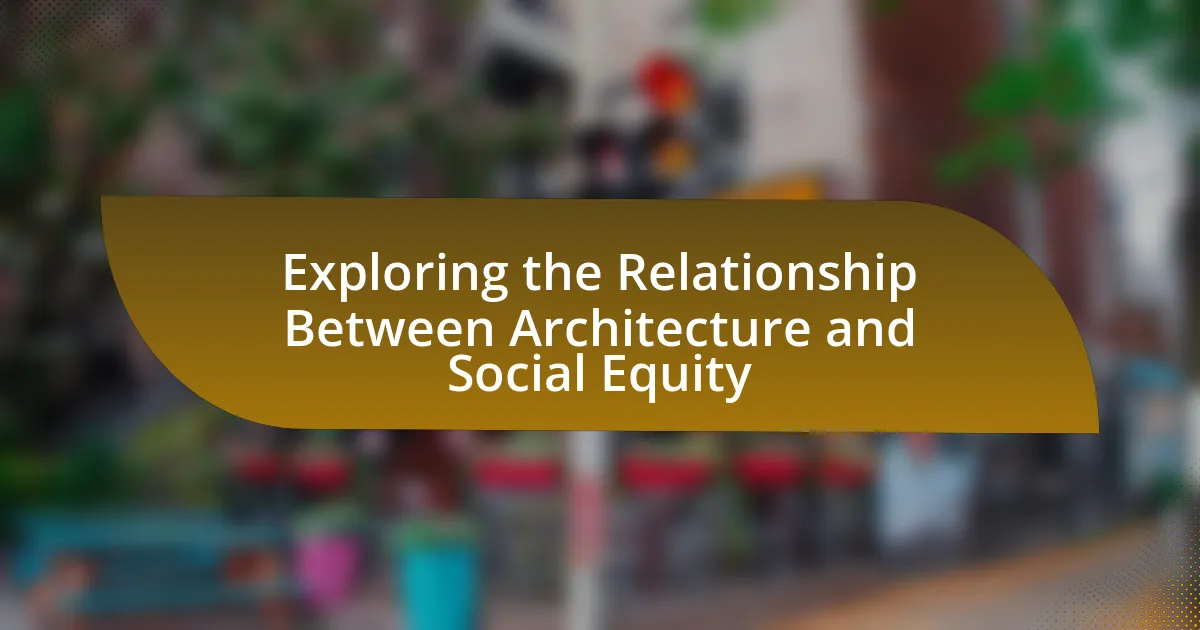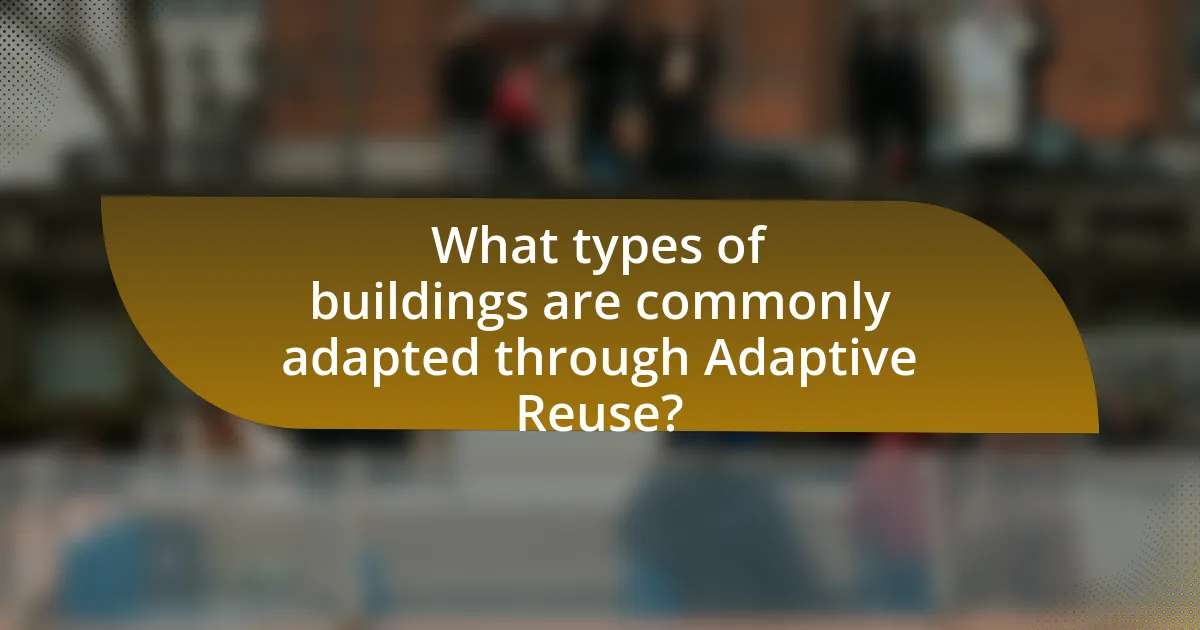Smart cities are urban areas that utilize digital technology and data analytics to improve residents’ quality of life, infrastructure, and resource management. This article explores the significance of smart cities in addressing urban challenges such as traffic congestion and energy consumption, while highlighting the integration of technologies like IoT, AI, and big data in urban planning. It emphasizes the importance of community needs in shaping smart city initiatives, the role of data collection in enhancing urban operations, and the potential challenges of balancing technological advancements with local culture. Additionally, the article discusses future trends and best practices for inclusive smart city development, ensuring that citizen engagement and equitable access to technology are prioritized.

What are Smart Cities and Why are They Important?
Smart cities are urban areas that leverage digital technology and data analytics to enhance the quality of life for residents, improve infrastructure, and optimize resource management. They are important because they address urban challenges such as traffic congestion, energy consumption, and waste management, ultimately leading to more sustainable and efficient living environments. For instance, according to the International Telecommunication Union, smart city initiatives can reduce energy consumption by up to 30% and improve public safety through enhanced surveillance and emergency response systems.
How do Smart Cities integrate technology into urban planning?
Smart Cities integrate technology into urban planning by utilizing data-driven solutions to enhance infrastructure, improve public services, and foster sustainable development. For instance, cities deploy sensors and IoT devices to collect real-time data on traffic patterns, energy consumption, and environmental conditions, which informs decision-making and resource allocation. A notable example is Barcelona, which uses smart lighting and waste management systems that optimize energy use and reduce operational costs. This integration of technology not only streamlines urban operations but also enhances the quality of life for residents by promoting efficient public transport and reducing pollution levels.
What technologies are commonly used in Smart Cities?
Smart cities commonly utilize technologies such as Internet of Things (IoT) devices, big data analytics, artificial intelligence (AI), and smart grids. IoT devices enable real-time data collection from various urban systems, while big data analytics processes this information to improve city services and infrastructure. AI enhances decision-making and operational efficiency by analyzing patterns and predicting future needs. Smart grids facilitate efficient energy distribution and management, contributing to sustainability. These technologies collectively enhance urban living by optimizing resources and improving service delivery.
How do these technologies enhance urban living?
Technologies enhance urban living by improving efficiency, sustainability, and quality of life for residents. Smart city technologies, such as IoT sensors, data analytics, and renewable energy systems, optimize resource management, reduce energy consumption, and enhance public services. For instance, smart traffic management systems can decrease congestion by 20-30%, leading to reduced travel times and lower emissions. Additionally, smart waste management solutions can increase recycling rates by up to 30% through real-time monitoring of waste levels. These advancements not only streamline urban operations but also foster a more connected and engaged community, ultimately contributing to a healthier urban environment.
What role do community needs play in the development of Smart Cities?
Community needs are fundamental in the development of Smart Cities as they guide the design and implementation of technology-driven solutions that enhance urban living. By prioritizing the specific requirements of residents, such as accessibility, safety, and sustainability, city planners can create environments that foster community engagement and improve quality of life. For instance, a study by the International Telecommunication Union highlights that Smart City initiatives that incorporate citizen feedback lead to higher satisfaction rates and better resource allocation. This evidence underscores the importance of aligning technological advancements with the actual needs of the community to ensure successful Smart City development.
How can community engagement shape Smart City initiatives?
Community engagement can significantly shape Smart City initiatives by ensuring that the needs and preferences of residents are integrated into urban planning and technology deployment. When local communities actively participate in decision-making processes, they provide valuable insights that can lead to more effective and user-friendly solutions. For instance, a study by the International Telecommunication Union found that cities with high levels of citizen involvement in Smart City projects reported greater satisfaction and improved service delivery. This engagement fosters trust, enhances transparency, and encourages collaboration between citizens and local governments, ultimately leading to more sustainable and responsive urban environments.
What are the potential challenges of balancing technology and community needs?
Balancing technology and community needs presents several challenges, including the risk of digital divide, privacy concerns, and the potential for technology to overshadow local culture. The digital divide can lead to unequal access to technological resources, leaving marginalized communities at a disadvantage; for instance, a report by the Pew Research Center in 2021 indicated that 27% of rural Americans lack access to high-speed internet, which hampers their ability to engage with smart city initiatives. Privacy concerns arise as technology collects vast amounts of data, potentially infringing on individual rights; a 2020 study by the Electronic Frontier Foundation highlighted that 81% of Americans feel they have little to no control over the data collected about them. Additionally, the implementation of technology can sometimes prioritize efficiency over community values, risking the erosion of local culture and identity, as seen in various urban development projects that have faced backlash for not considering community input.

What are the Key Components of a Smart City?
The key components of a smart city include advanced infrastructure, data analytics, sustainable energy systems, smart transportation, and citizen engagement platforms. Advanced infrastructure integrates technology into physical structures, enabling efficient resource management. Data analytics processes large volumes of information to improve decision-making and service delivery. Sustainable energy systems focus on renewable energy sources and energy efficiency to reduce environmental impact. Smart transportation utilizes connected vehicles and real-time data to enhance mobility and reduce congestion. Citizen engagement platforms facilitate communication between residents and city officials, promoting transparency and community involvement. These components collectively enhance urban living and address community needs effectively.
How does data collection influence Smart City operations?
Data collection significantly influences Smart City operations by enabling data-driven decision-making and optimizing resource management. Through the aggregation of data from various sources such as sensors, traffic cameras, and citizen feedback, city planners can analyze patterns and trends to improve urban services. For instance, real-time traffic data allows for dynamic traffic management, reducing congestion and enhancing public transportation efficiency. A study by the McKinsey Global Institute found that effective data utilization in urban environments can lead to a 10-30% reduction in operational costs and improved service delivery. This demonstrates that data collection is essential for enhancing the functionality and sustainability of Smart Cities.
What types of data are collected in Smart Cities?
Smart Cities collect various types of data, including transportation data, environmental data, energy consumption data, and demographic data. Transportation data encompasses traffic patterns, public transit usage, and vehicle counts, which help optimize traffic flow and improve public transport services. Environmental data includes air quality measurements, noise levels, and weather conditions, enabling cities to address pollution and climate change impacts. Energy consumption data tracks usage patterns in buildings and infrastructure, facilitating energy efficiency initiatives. Demographic data provides insights into population distribution and needs, guiding urban planning and resource allocation. These data types are essential for enhancing urban living and ensuring sustainable development in Smart Cities.
How is data privacy managed in Smart City frameworks?
Data privacy in Smart City frameworks is managed through a combination of regulatory compliance, data anonymization, and robust cybersecurity measures. Smart City initiatives often adhere to regulations such as the General Data Protection Regulation (GDPR) in Europe, which mandates strict guidelines on data collection, processing, and storage to protect citizens’ personal information. Additionally, data anonymization techniques are employed to ensure that individual identities cannot be traced from the data collected, thereby enhancing privacy. Furthermore, cybersecurity protocols, including encryption and access controls, are implemented to safeguard data against unauthorized access and breaches. These measures collectively ensure that data privacy is prioritized while leveraging technology for urban development.
What infrastructure is essential for Smart City functionality?
Essential infrastructure for Smart City functionality includes advanced communication networks, data management systems, and integrated transportation systems. Advanced communication networks, such as 5G, enable real-time data exchange and connectivity among devices, which is crucial for smart applications. Data management systems facilitate the collection, analysis, and storage of vast amounts of data generated by sensors and IoT devices, allowing for informed decision-making. Integrated transportation systems, including smart traffic management and public transit solutions, enhance mobility and reduce congestion. These components collectively support the operational efficiency and sustainability of Smart Cities, as evidenced by successful implementations in cities like Barcelona and Singapore, where such infrastructures have led to improved urban living conditions and resource management.
How do transportation systems integrate with Smart City technology?
Transportation systems integrate with Smart City technology through the use of data analytics, IoT devices, and real-time communication networks. These technologies enable efficient traffic management, optimize public transit routes, and enhance user experience by providing real-time information on transportation options. For instance, cities like Barcelona utilize smart traffic lights that adapt to real-time traffic conditions, reducing congestion and improving travel times. Additionally, integrated platforms allow for seamless payment systems across various modes of transport, promoting the use of public transit and reducing reliance on personal vehicles. This integration not only improves operational efficiency but also contributes to sustainability goals by minimizing carbon emissions and enhancing the overall quality of urban life.
What role does energy management play in Smart Cities?
Energy management is crucial in Smart Cities as it optimizes energy consumption, enhances sustainability, and improves the quality of life for residents. By implementing advanced technologies such as smart grids and IoT devices, cities can monitor and control energy usage in real-time, leading to reduced waste and lower costs. For instance, a study by the International Energy Agency indicates that effective energy management can reduce urban energy consumption by up to 30%. This efficiency not only decreases greenhouse gas emissions but also supports the integration of renewable energy sources, fostering a more resilient and sustainable urban environment.

What are the Future Trends in Smart Cities?
Future trends in smart cities include increased integration of Internet of Things (IoT) devices, enhanced data analytics for urban planning, and a focus on sustainability through smart energy solutions. The integration of IoT devices allows for real-time monitoring of city infrastructure, improving efficiency and responsiveness. Enhanced data analytics enables cities to make informed decisions based on patterns and trends, optimizing resource allocation. Additionally, sustainability initiatives, such as smart grids and renewable energy sources, are becoming central to urban development, as cities aim to reduce carbon footprints and promote environmental health. According to a report by McKinsey, smart city technologies could reduce greenhouse gas emissions by up to 15% by 2030, highlighting the importance of these trends in addressing climate change.
How will emerging technologies shape the future of Smart Cities?
Emerging technologies will significantly shape the future of Smart Cities by enhancing urban efficiency, sustainability, and quality of life. Technologies such as the Internet of Things (IoT), artificial intelligence (AI), and big data analytics will enable real-time monitoring and management of city resources, leading to optimized traffic flow, reduced energy consumption, and improved public safety. For instance, a study by McKinsey Global Institute indicates that smart city technologies could reduce greenhouse gas emissions by up to 30% by 2030. Additionally, AI-driven predictive analytics can help city planners make informed decisions, ensuring that community needs are met while fostering economic growth. These advancements will create interconnected urban environments that prioritize both technological integration and the well-being of residents.
What impact will AI and machine learning have on urban management?
AI and machine learning will significantly enhance urban management by optimizing resource allocation, improving public services, and enabling data-driven decision-making. For instance, AI algorithms can analyze traffic patterns to reduce congestion, leading to more efficient transportation systems. Additionally, machine learning can predict maintenance needs for infrastructure, allowing cities to proactively address issues before they escalate, thus saving costs and improving safety. According to a report by McKinsey, cities that implement AI-driven solutions can increase operational efficiency by up to 30%, demonstrating the tangible benefits of these technologies in urban environments.
How can IoT devices enhance the Smart City experience?
IoT devices enhance the Smart City experience by enabling real-time data collection and analysis, which improves urban management and citizen engagement. For instance, smart sensors can monitor traffic patterns, allowing cities to optimize traffic flow and reduce congestion, as evidenced by studies showing a 30% reduction in travel time in cities that implemented smart traffic management systems. Additionally, IoT devices facilitate efficient resource management, such as smart waste bins that signal when they need to be emptied, leading to a 20% reduction in waste collection costs. This integration of technology not only streamlines city operations but also fosters a more responsive and sustainable urban environment, ultimately enhancing the quality of life for residents.
What strategies can be implemented to ensure community needs are met?
To ensure community needs are met, strategies such as participatory planning, data-driven decision-making, and inclusive policy development can be implemented. Participatory planning involves engaging community members in the decision-making process, which has been shown to increase satisfaction and relevance of services, as evidenced by the success of community forums in cities like Barcelona. Data-driven decision-making utilizes analytics to assess community needs accurately, allowing for targeted resource allocation; for instance, cities using real-time data to optimize public transport routes have seen increased ridership and satisfaction. Inclusive policy development ensures that diverse voices are heard, which is critical for addressing the needs of marginalized groups, as demonstrated by the implementation of equity assessments in urban planning in cities like Seattle.
How can policymakers foster collaboration between technology providers and communities?
Policymakers can foster collaboration between technology providers and communities by creating inclusive platforms for dialogue and partnership. These platforms can facilitate regular meetings, workshops, and forums where stakeholders can share insights, needs, and challenges. For instance, the Smart Cities Initiative in various countries has demonstrated that engaging local communities in the planning stages of technology deployment leads to solutions that better address community needs, as evidenced by increased public satisfaction and usage rates. Additionally, policymakers can incentivize technology providers to prioritize community engagement through grants or recognition programs, thereby aligning their business objectives with community interests.
What best practices can be adopted for inclusive Smart City development?
Inclusive Smart City development can be achieved through several best practices, including stakeholder engagement, equitable access to technology, and data transparency. Stakeholder engagement ensures that diverse community voices are included in the planning process, which fosters a sense of ownership and addresses the specific needs of various demographics. Equitable access to technology involves providing affordable internet and smart services to all residents, particularly marginalized groups, to prevent digital divides. Data transparency allows citizens to understand how data is collected and used, promoting trust and encouraging public participation in decision-making. These practices are supported by research indicating that cities prioritizing inclusivity see improved social cohesion and economic growth, as evidenced by the United Nations’ Sustainable Development Goals, which emphasize inclusive urbanization.
What are the practical steps for citizens to engage with Smart City initiatives?
Citizens can engage with Smart City initiatives by participating in local government meetings, providing feedback through surveys, and joining community forums focused on urban development. Local governments often hold public meetings where citizens can voice their opinions and learn about upcoming Smart City projects. Additionally, many municipalities distribute surveys to gather public input on technology implementations, allowing citizens to express their needs and preferences. Community forums, both online and in-person, serve as platforms for discussion and collaboration on Smart City strategies, fostering a sense of ownership and involvement in the development process. Engaging in these activities ensures that citizens’ voices are heard and considered in the planning and execution of Smart City initiatives.




















